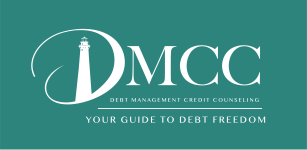FEATURE ARTICLE: If you’re in debt, you’re not alone. Consumer debt in America is extraordinarily high. Sometimes it’s hard to know – or admit – if you have a problem with debt. It can be overwhelming to realize that you’ve gotten in over your head, and to worry that you won’t be able to pay back what you owe. The key to getting out of your situation is to act now. Don’t procrastinate. Taking charge of your finances and creating a plan for tackling your debt will cut down your anxiety and get you on the path toward a better financial future.
First, ask yourself whether debt has become a problem for you. Here are some circumstances that might indicate it has:
- Next month’s bills arrive before last month’s have been paid
- Your bills often include late fees
- You avoid opening bills when they arrive in the mail
- You procrastinate balancing checkbooks
- You bounce checks
Write it Out
Do you actually know how much debt you have? Many people don’t. Start by making a list of everything you owe, whether it’s a mortgage, a credit card balance, student loans or even money you borrowed from family or friends. Write down:
- The lender’s name
- The amount you owe
- The term of the loan
- The interest rate and fees
Then total them up. Looking at the numbers can be worrisome, but this is a positive – and necessary – first step to tackling your debt.
The power of 50
Paying the minimum amount due on your credit cards is one of the fastest ways to fall further into debt, and it can keep you in debt for years or decades.
If you have a credit card with a $3,000 balance at an annual interest rate of 18%, and you pay only the 2% minimum monthly payment of $60 per month, it would take you 8 years to pay off your bill. Not only that, you will have paid $5,780 by the end of the 8 years – almost double the $3,000 you thought you were spending when you made the charges.
Paying just $50 above the minimum amount due each month will make an incredible difference in how quickly you can pay down what you owe. If you pay an additional $50 per month toward your $3,000 balance for a total payment of $110 a month, you could pay off the debt in 3 years instead of 8, and save yourself over $1,800 in interest. Imagine what you could do with $100 more per month.
But if you can pay an additional $50 per month on that debt, for a total payment of $110 a month, you will pay down more of the $3,000 you originally owed. And that means less money for the creditor to charge interest on. As a result, you would pay off the debt in 3 years and save over $1,800 in interest payments.
Imagine what you could do with $100 more per month.
Be realistic
Now that you have analyzed your debt situation, it’s time to look at your monthly budget and set realistic goals. That trip you had planned for next summer, or the new car you were hoping to buy may not be in the cards right now given your new outlook on reducing your debt.
Don’t get discouraged
Reducing debt is like losing weight. You’re not going to lose 50 pounds in a month – you need realistic goals in reasonable timeframes, and debt works the same way. For most people, it takes years to become debt-free. This doesn’t mean you have to stop enjoying your life. It’s just a reminder to live within your means and be diligent about adjusting any spending habits that have contributed to the situation you are in today. Dedicating yourself to paying off what you owe and becoming debt-free will be worth the wait, with the payoff being a brighter financial future.
For a complete budget worksheet, click here.
MONEY SAVING TIP: Wanting or needing to purchase a computer? Check out Apple or Dell for great deals under their refurbished section. They even offer free shipping!
DID YOU KNOW… about the Rule of 72? Doubling your money is easy to figure with the rule of 72. To determine about how many years it will take to double your money, divide 72 by the interest rate. For example, if you have a 10% interest rate, divide 72 by ten. At that rate, you’ll be able to double your investment in 7.2 years.
You can use the same principle to understand what interest rate you’ll need to double your money in a targeted number of years. To find out, divide 72 by the number of years you want to keep your money invested to come up with the interest rate required. For example, if you want to invest for 15 years, divide 72 by fifteen to find that you can double your money in fifteen years with an interest rate of 4.8%.
